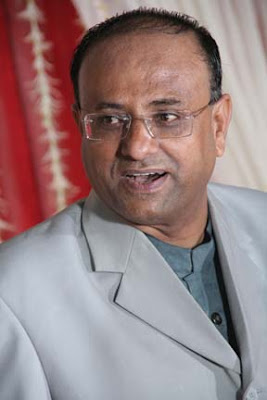
Manmohan Singh had his arteries bypassed on Saturday, a procedure that increasing numbers of Indians are having. Last year, medical journal Lancet reported a study of 20,000 Indian patients and found that 60 per cent of the world's heart disease patients are in India, which has 15 per cent of the world's population.This number is surprising because reports of obesity and heart disease focus on fat Americans and their food. What could account for Indians being so susceptible -- more even than burger-and-fries-eating Americans?Four things: diet, culture, stress and lack of fitness.There is no doctrinal prescription for vegetarianism in Hindu diet, and some texts explicitly sanction the eating of meat. But vegetarianism has become dogma.Indian food is assumed to be strongly vegetarian, but it is actually lacking in vegetables. Our diet is centred around wheat, in the north, and rice, in the south. The second most important element is daal in its various forms. By weight, vegetables are not consumed much. You could have an entire South Indian vegetarian meal without encountering a vegetable. The most important vegetable is the starchy aloo. Greens are not cooked flash-fried in the healthy manner of the Chinese, but boiled or fried till much of the nutrient value is killed.Gujaratis and Punjabis are the two Indian communities most susceptible to heart disease. Their vulnerability is recent. Both have a large peasant population -- Patels and Jats -- who in the last few decades have moved from an agrarian life to an urban one. They have retained their diet and if anything made it richer, but their bodies do not work as much. This transition from a physical life to a sedentary one has made them vulnerable..Gujaratis lead the toll for diabetes as well, and the dietary aspect of this is really the fallout of the state's economic success. Unlike most Indian states, Gujarat has a rich and developed urban culture because of the mercantile nature of its society. Gujaratis have been living in cities for centuries.His prosperity has given the Gujarati surplus money and, importantly, surplus time. These in turn have led to snacky foods, some deep fried, some steamed and some, uniquely in India, baked with yeast. Most Indians are familiar with the Gujarati family on holiday, pulling out vast quantities of snacks the moment the train pushes off.Gujarati peasant food -- bajra (millet) roti, a lightly cooked green, garlic and red chilli chutney, and buttermilk -- is actually supremely healthy. But the peasant Patel has succumbed to the food of the 'higher' trader and now prefers the oily and the sweet.Marathi peasant food is similar, but not as wholesome with a thick and pasty porridge called zunka replacing the green.Bombay's junk food was invented in the 19th century to service Gujarati traders leaving Fort's business district late in the evening after a long day. Pao bhaji, mashed leftover vegetables in a tomato gravy served with shallow-fried buns of bread, was one such invention.The most popular snack in Bombay is vada pao, which has a batter-fried potato ball stuck in a bun. The bun -- yeast bread -- is not native to India and gets its name pao from the Portuguese who brought it in the 16th century. Bal Thackeray encouraged Bombay's unemployed Marathi boys to set up vada pao stalls in the 60s, which they did and still do.The travelling chef and TV star Anthony Bourdain called vada pao the best Indian thing he had ever eaten, but it is heart attack food..
No comments:
Post a Comment